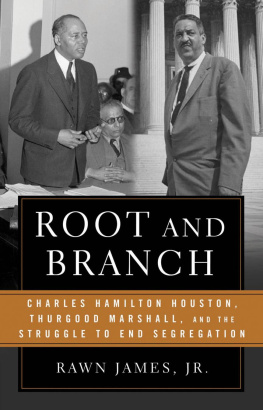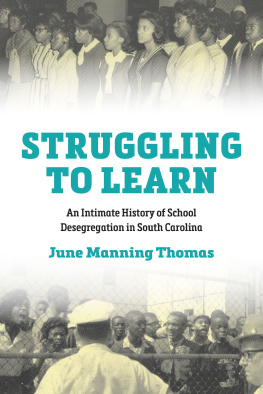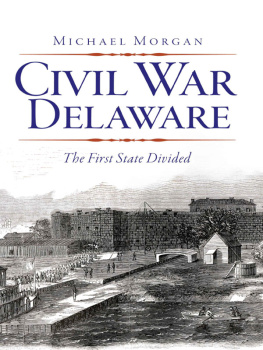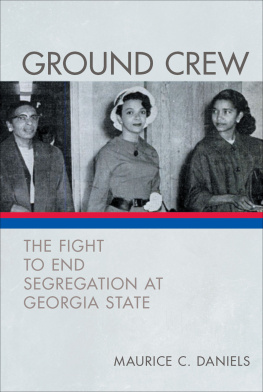Between North and South
POLITICS AND CULTURE IN MODERN AMERICA
Series Editors: Margot Canaday, Glenda Gilmore,
Michael Kazin, and Thomas J. Sugrue
Volumes in the series narrate and analyze political and social change in the broadest dimensions from 1865 to the present, including ideas about the ways people have sought and wielded power in the public sphere and the language and institutions of politics at all levelslocal, national, and transnational. The series is motivated by a desire to reverse the fragmentation of modern U.S. history and to encourage synthetic perspectives on social movements and the state, on gender, race, and labor, and on intellectual history and popular culture.
Copyright 2013 University of Pennsylvania Press
All rights reserved. Except for brief quotations used for purposes of review or scholarly citation, none of this book may be reproduced in any form by any means without written permission from the publisher.
Published by
University of Pennsylvania Press
Philadelphia, Pennsylvania 19104-4112
www.upenn.edu/pennpress
Printed in the United States of America on acid-free paper
2 4 6 8 10 9 7 5 3 1
Library of Congress Cataloging-in-Publication Data
Gadsden, Brett V., 1969
Betweeen north and south : Delaware, desegregation, and the myth of American sectionalism / Brett Gadsden. 1st ed.
p. cm. (Politics and culture in modern America)
Includes bibliographical references and index.
ISBN 978-0-8122-4443-4 (hardcover : alk. paper)
1. Segregation in educationLaw and legislationDelawareHistory20th century. 2. School integrationDelawareHistory20th century. 3. Discrimination in educationLaw and legislationDelawareHistory20th century. 4. African AmericansEducationDelawareHistory20th century. I. Title. II. Series: Politics and culture in modern America.
LC2802.D3G34 2012
379.2'6309751dc23 | 2012008454 |
As long as you are South of the Canadian Border, you are South.
Malcolm X, King Solomon Baptist Church,
Detroit, Michigan, April 12, 1964
Introduction
In the early summer of 1974, freshman senator Joseph Biden (D-Del.) accepted an invitation from the Gordy Estates Civic Association at the Krebs School in Newport, Delaware, located just south of Wilmington, to discuss the issue of busing with his constituents. Two years earlier, school desegregation proponents had reopened a suit against the state board of education over the matter of racially segregated city and suburban schools. Building on litigation strategies developed roughly four decades earlier, which focused on the problem of school segregation in the context of the Jim Crow South, reformers now focused their efforts on a challenge to this persistent problem in a new context, one in which school segregation was rooted not in law but in geography, with white students concentrated in suburban schools and black students concentrated in city schools. In response, the U.S. district court had found a record of state-sponsored discriminatory practices in school and housing policy that reinforced segregation and had set about to consider a variety of remedies, including a two-way busing program that promised to transfer students between urban and suburban districts. The possibility that black andworsewhite students would be transferred across the municipal boundary sent a wave of anxiety through the white population.
Although the organizers of the Krebs School event had presented the affair to Biden as an open discussion about busing, it had in truth been organized by the anti-busing Neighborhood Schools Association, whose leadership had pledged massive resistance to desegregation. For two hours Biden paced the auditorium stage and absorbed the ire of the 250-member audience, composed of mostly local white residents. He counseled patience and noted that the Wilmington situation hinged on developments in the Supreme Court as it deliberated upon a Detroit segregation case, Milliken v. Bradley, in which the facts were essentially the same.
In the mid-1970s, Biden and the nation had reached a crossroad of sorts in the struggle over the issues of racial segregation and inequality. Civil rights activists had won a succession of court rulings in the 1960s and 1970s and secured the passage of federal legislation in the mid-1960s that promised African Americans equality before the law. Still, as was made particularly clear when the movement turned its attention north and west and urban uprisings erupted in cities across the United States, segregation and inequality remained endemic in many parts of the country. And just as southern whites had often resisted the movement, so too did northern and western whites outside the South respond to the advance of reform, especially when its proponents made demands for more affirmative actionsmeasures that promised to advance desegregation outside the context of Jim Crow.
Biden had campaigned for his Senate seat on a promise to support the ideals of the civil rights movementsuch as racial equality and equal opportunitythat were enshrined in major legislation of the 1960s.
Just over one year into what would become a long and distinguished career in national politics, Joe Biden had come face-to-face with a central challenge confronting public officials in the modern era. On one hand, politicians sought to answer the demands from black communities and civil rights activists that they dismantle systems of segregated schools and recognize blacks rights as citizens; on the other, they faced persistent white opposition intent on maintaining segregated schools or, at the very least, minimizing the impact of school desegregation remedies. This book is a study of the decades-long struggle between proponents and opponents of school desegregation in Delaware and the evolving case law and consequent public policies. This project explores the historical roots of Bidens heated meeting with his constituents, as well asmore broadlythe possibilities and limits of the liberal consensus around civil rights in the post-World War II era.

To make better sense of the contest between school desegregation proponents and opponents, I explore three interrelated concepts: civil rights liberalism, geographic sectionalism, and white reaction. As historians have expanded their study of the civil rights movement, civil rights liberals who sought remedies in the courts (particularly to address school segregation) have received a critical reassessment. In gauging their accomplishments, scholars have focused on the unfinished agenda of Brown v. Board of Education and the prohibitively high costs of school desegregation, especially to black teachers. Some have even argued that Brown did more to undermine reform than to advance it, while others have critiqued the limitations inherent in a court-oriented approach to social change. In hindsight, scholars have also noted that the focus of the NAACP and other organizations on formal equality before the law, their emphasis on civil rights instead of economic rights, and their concession to Cold War imperatives had a moderating influence on the civil rights movement. A few scholars have even taken the position of I contend that civil rights liberals and school desegregation proponents in Delaware possessed a sophisticated understanding of the discursive and structural bases of racial inequality in U.S. society and forwarded a dynamic, powerful, and efficacious challenge to those foundations. Moreover, their tactics were sensitive to the changing patterns of racial segregation both in the Jim Crow context, when state law sanctioned segregation, and in the post-Jim Crow era, when school segregation was a function of the sum of discriminatory education and housing policy.










